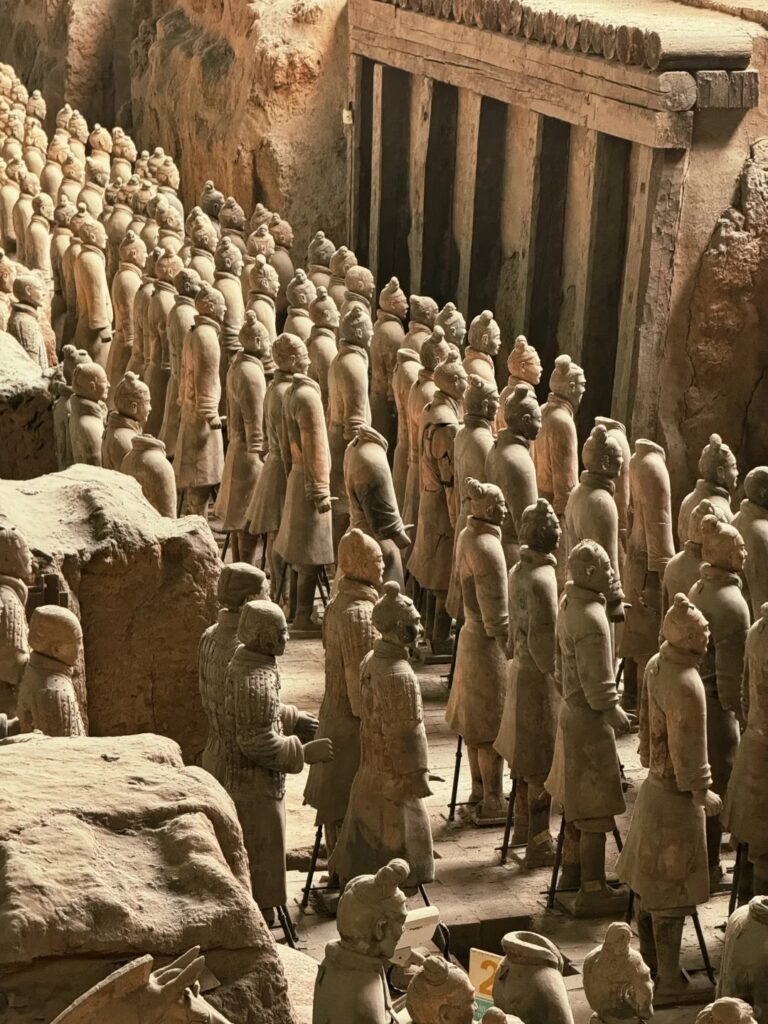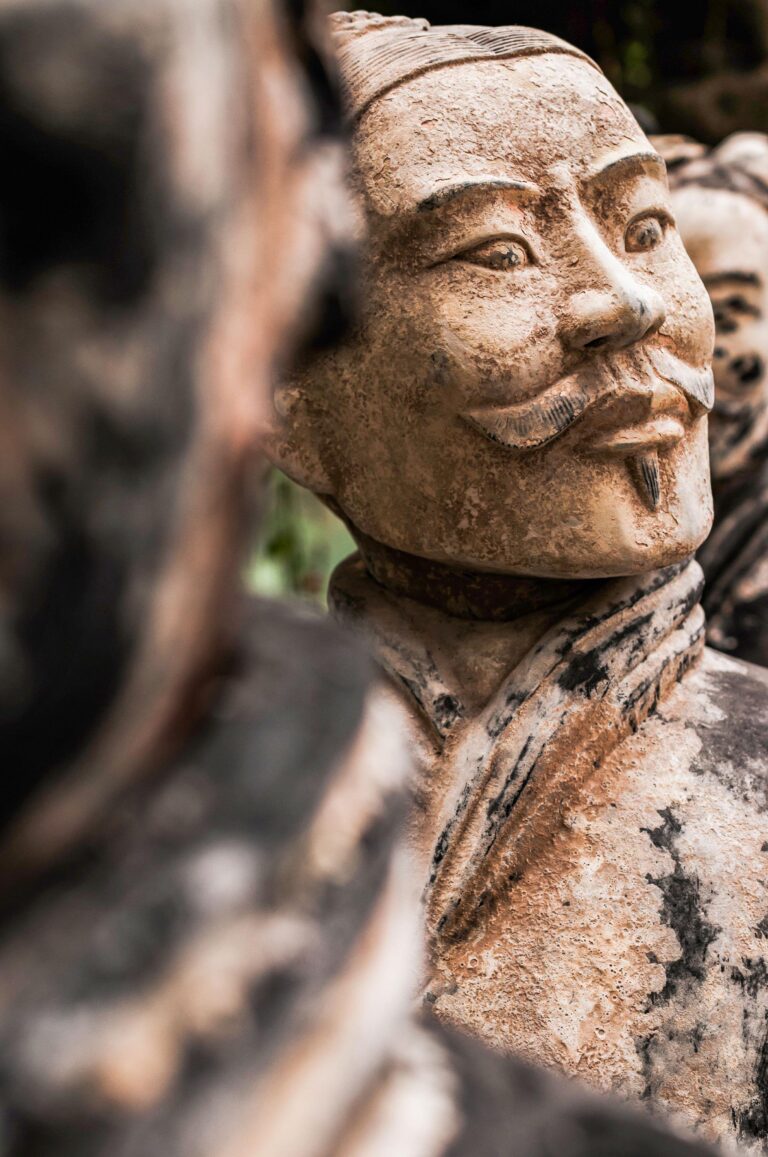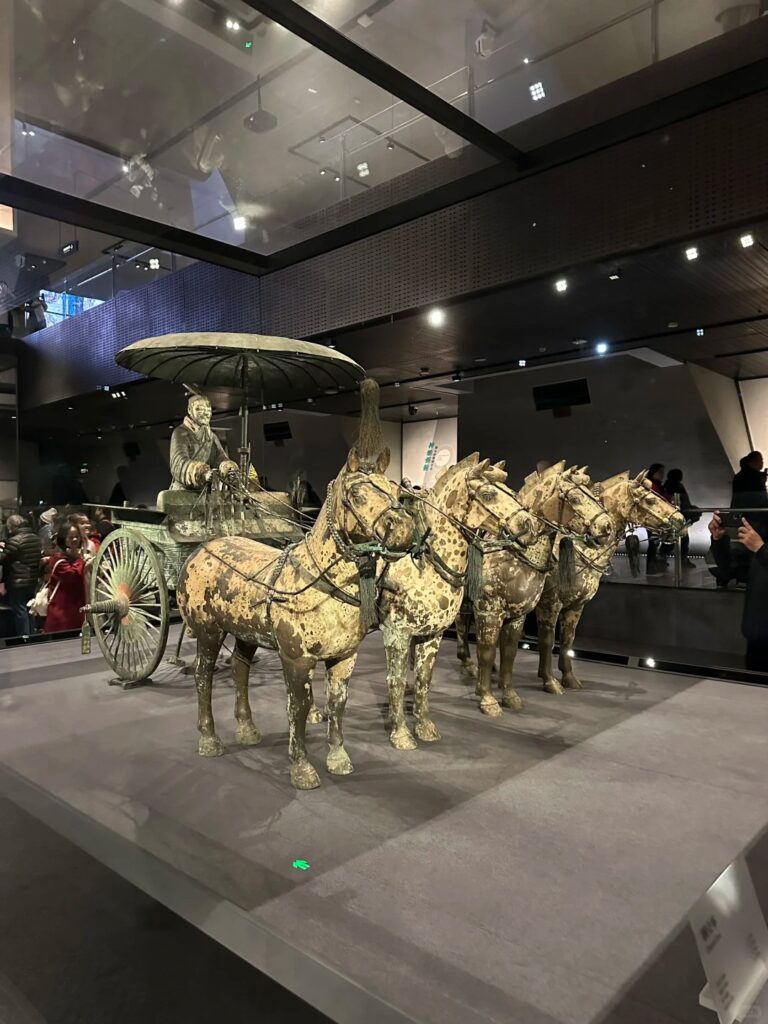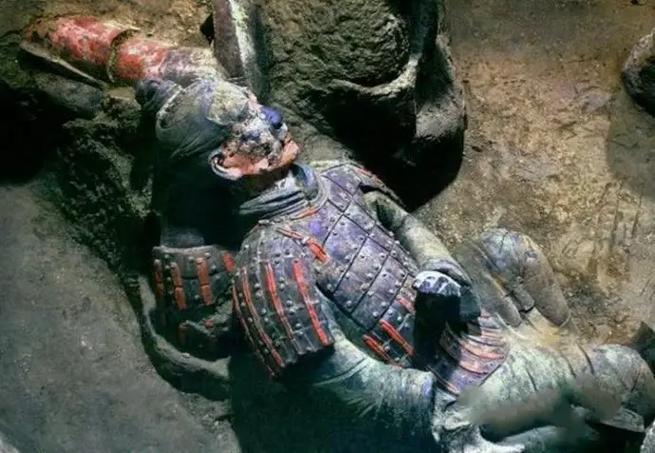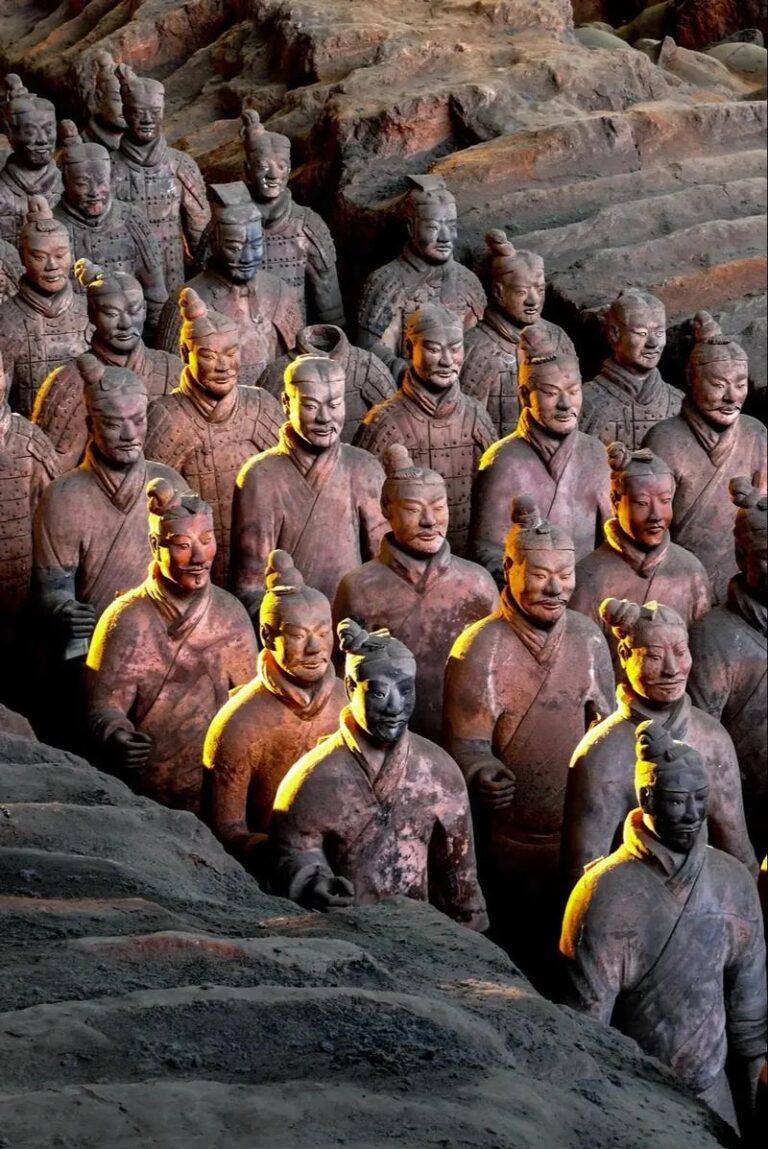What city has the Terracotta Army?
The City of Terracotta Warriors: Xi’an, the Underground Imperial Army
When you hear the term “Terracotta Warriors,” does an image of ancient and mysterious China immediately come to mind? These imposing, numerous clay warriors are indeed a breathtaking chapter in the long history of humanity. But if asked, “Where exactly do they lie dormant?” the answer is a single name—Xi’an City in Shaanxi Province, China.
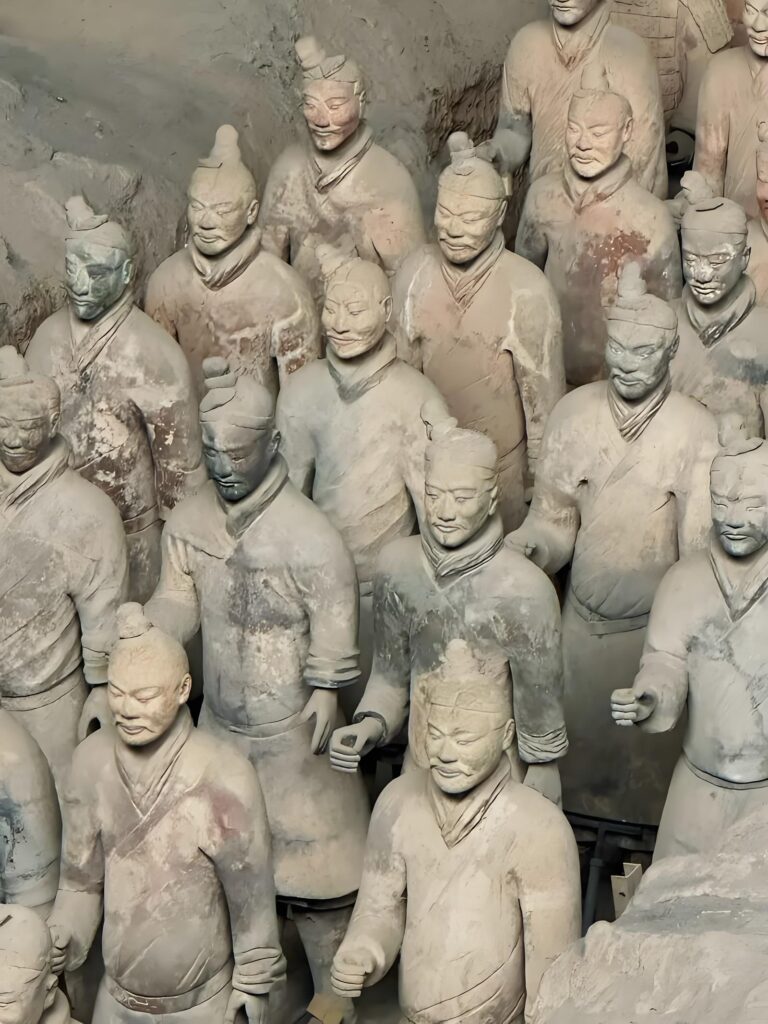
Xi’an: A Thousand-Year Echo on the Loess Plateau
Xi’an, the home of the Terracotta Army, is far from an ordinary city. It is located on the Loess Plateau in northwestern China. If you travel westward from Beijing, after approximately 900 kilometers (equivalent to the distance from New York to Chicago), you will arrive at this ancient capital steeped in history. Over two thousand years ago, Xi’an served as the capital of the powerful Qin Dynasty, bearing the more illustrious name of Xianyang. It was on this very land that the first emperor of China, Qin Shi Huang, realized his grand vision and ambitions.
Qin Shi Huang’s Eternal Dream: The Birth of the Underground Army
In the 3rd century BCE, Emperor Qin Shi Huang unified the Chinese mainland with overwhelming force. This emperor, who sought eternal power, also had grand visions for the afterlife: he believed that even after death, he would need a powerful army to protect his soul and empire. Thus, an unprecedented grand project was launched—the Terracotta Army was born in this context. This was not a cruel human sacrifice, but rather the use of clay bodies to replace flesh and blood, reflecting the ancient people’s faith and reverence for the afterlife. The over 8,000 lifelike terracotta warriors are a tangible expression of his desire to extend his supreme authority into another dimension.
Awakening After a Millennium of Slumber: Farmers’ Shovels and Archaeologists’ Breath
Time passed, and this vast underground army remained buried in the yellow earth for over two thousand years, until a ordinary day in the spring of 1974. Several farmers in Lintong District were digging for water when their shovels accidentally struck a hard clay fragment—in that instant, the deep silence was broken. Archaeologists rushed to the site, carefully brushing away the dust, and one by one, warriors, warhorses, and chariots emerged from the earth. When the vast Pit 1 was uncovered, the world was stunned—before their eyes lay a neatly arranged, majestic ancient underground army! This discovery was hailed as “the greatest archaeological miracle of the 20th century,” completely rewriting the world’s understanding of Qin-era military, art, and technology.
Facing the Underground Army: An Empire of Breathless Detail
Stepping into the Qin Shi Huang Mausoleum Museum today and facing the terracotta army formation, the impact is overwhelming:
Scale: Pit 1 is as large as a football field, housing over 6,000 terracotta warriors. The formation of chariots and infantry is strict and imposing, as if ready to charge at a moment’s notice.
A Thousand Faces: Upon closer inspection, one marvels at the artisans’ masterful craftsmanship—no two faces are alike! Square faces, round faces, single eyelids, double eyelids, the vitality of youth, the composure of age, even beards and hairstyles vary in form. They seem like frozen Qin-era soldiers, their ranks ranging from generals and military officers to ordinary soldiers, clearly distinguished.
The pinnacle of realism: The terracotta warriors stand an average of 1.8 meters tall, with robust physiques. Every detail—from the armor plates, the folds of their battle robes, the straps of their shoes, to the lifelines on their palms—is rendered with extraordinary precision. They once held real bronze weapons in their hands, though most have been lost or eroded by time. Yet the cold, piercing glow of those weapons can still be imagined.
The Splendor of the Bronze Chariots: In addition to the infantry terracotta warriors, the two painted bronze chariots, hailed as the “crown jewels of bronze,” are masterpieces of craftsmanship. Their complex manufacturing techniques and exquisite decorations represent the pinnacle of Qin Dynasty bronze casting, serving as compelling evidence of Emperor Qin Shi Huang’s imperial chariot system.
A Practical Guide to Visiting the Underground Army
If you plan to visit Xi’an to see this “underground army” in person, the following information is essential:
Precise Location: The terracotta warriors are located in Lintong District, Xi’an, approximately 40 kilometers from the city center.
Convenient Transportation: From the city center of Xi’an, you can take a convenient tourist bus line (such as Route 5) or a taxi/ride-sharing service, which will take about an hour to arrive.
Timing: Avoid the peak crowds during China’s national holidays (such as National Day in October and the Spring Festival). The spring and autumn seasons (April–May and September–October) offer the most pleasant weather.
Exploration Route: The core areas include Pit 1 (main army formation), Pit 2 (mixed military units), Pit 3 (command center), and an independent exhibition hall showcasing the national treasure-level bronze chariots and horses. Allow at least half a day to fully appreciate the site.
Taste Memories: After the tour, try Xi’an’s signature dishes—steaming hot beef and lamb soup with bread or smooth and chewy cold noodles—to savor the ancient charm of Chang’an on your palate.
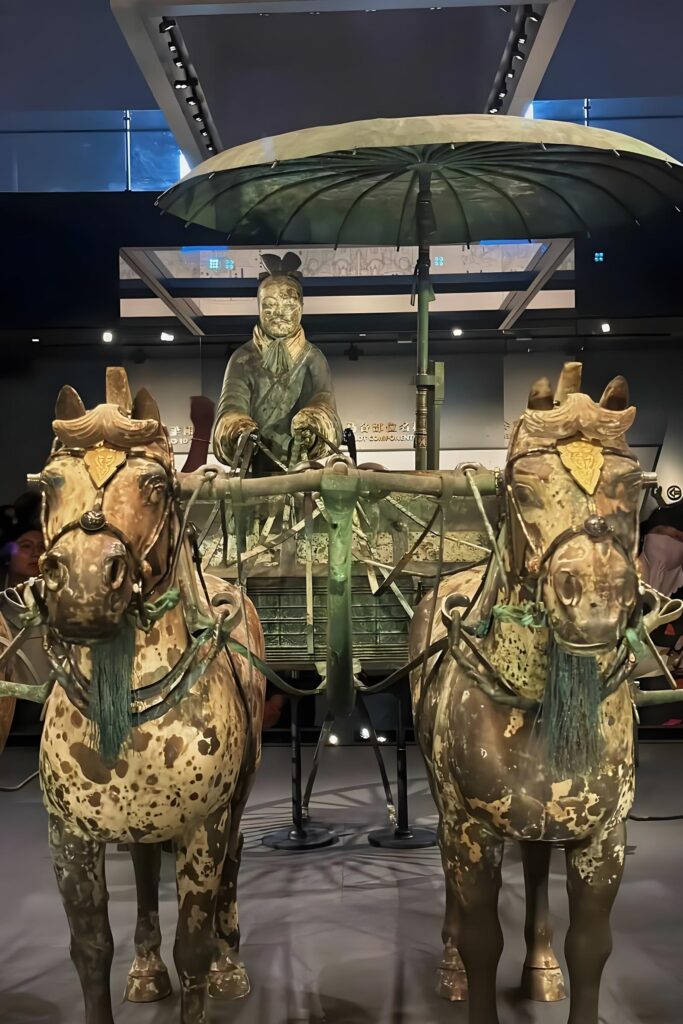
Beyond Clay: A Shared Civilizational Landmark
The Terracotta Warriors of Xi’an have long transcended their physical existence as a group of clay figures. They are the cold reflection of Emperor Qin Shi Huang’s unification of China and his immortal ambitions, an eternal ode to the wisdom and craftsmanship of Qin-era artisans, and a living fossil of ancient China’s military, artistic, technological, and funerary civilizations. Standing at the edge of the pit, gazing at the thousands of warriors, time seems to stand still. Each silent face of the terracotta warriors is like a messenger spanning millennia, silently conveying the colossal power of a vanished empire and its relentless pursuit of eternity.
This is not only a precious heritage that China has bestowed upon the world, but also an indelible mark on the coordinates of human civilization—buried beneath the loess of Xi’an lies a grand epic about power, death, art, and the collective memory of humanity. It reminds us that even in the deepest silence, the echoes of history are sufficient to shake the present, connecting the shared awe of East and West toward this ancient marvel.


